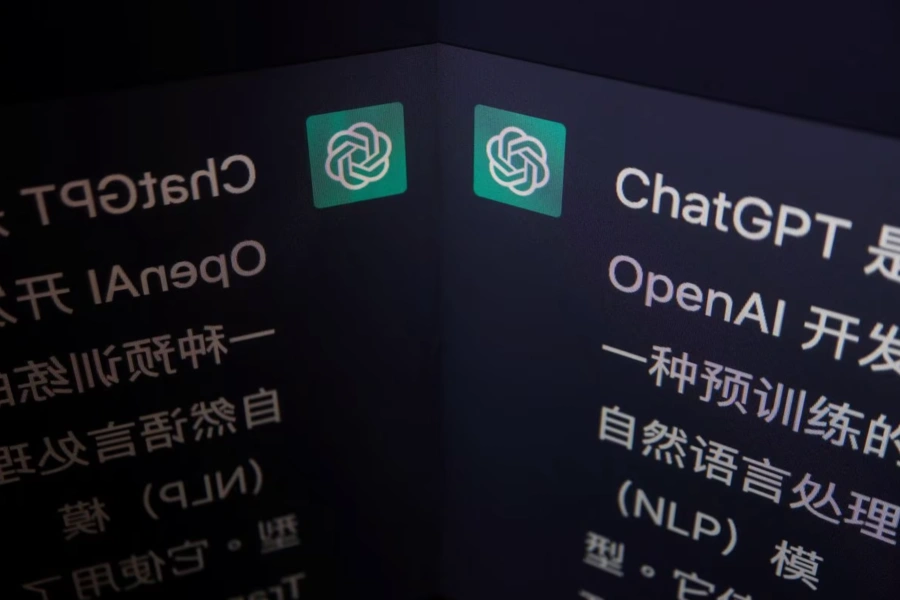Seaton Huang

Global interest in generative artificial intelligence (AI) has skyrocketed due to the emergence of ChatGPT, a web app that utilizes large language models (LLMs) in order to provide users on-demand information as directed. The OpenAI-developed chatbot has made headlines for a multitude of reasons, ranging from users reacting to its ability to simplify complicated tasks to investigations of its receiving funding from the likes of Microsoft. Excitement about the technology has sparked a major competition among Chinese companies to launch a viable competitor for the domestic market.
To be sure, China’s stringent regulations surrounding data security and censorship pose questions about the capabilities of AI generated content (AIGC) in the country. Although it is likely that localized versions of ChatGPT will differ from their U.S.-developed counterpart, Chinese firms’ recent activity suggests a belief that generative AI technologies will still be transformative to the country’s technology sector. So, in a sea of competitors racing to take the lead in the generative AI market in China’s private sector, what progress has been made?
Baidu: Baidu, the AI-focused company known for running China’s largest search engine, will launch a chatbot called wenxin yiyan or “Ernie Bot” in English. A company spokesperson told The Register that the bot “expands into a series of advanced big models that can perform a wide range of tasks, including language understanding, language generation, and text-to-image generation.” Baidu has been building Ernie’s LLMs since 2019 and plans to complete internal testing in March. As of February 14, a number of partners that will leverage Ernie’s technology—ranging from intelligent vehicle companies to media platforms—have been identified.
Alibaba: Technology giant Alibaba is in the internal testing stage of developing its own ChatGPT-style chatbot. The project is being undertaken by Alibaba’s DAMO Academy, a research institute that conducts the company’s research in AI and other emerging and frontier technologies. On February 7, DAMO Academy reportedly increased its registered capital from 10 million yuan to 300 million yuan and applied for a patent for a “human-computer dialogue and pre-trained language model training method, system and electronic equipment.”
JD: E-commerce company JD’s cloud computing branch JD Cloud is launching ChatJD, an AIGC platform based on its AI platform Yanxi that will be used for scenarios in several sectors, including retail and finance. ChatJD will integrate K-PLUG, a proprietary knowledge-injected pre-trained language model, to generate text and learn users’ intentions. He Xiaodong, vice president of JD, has said that he envisions the company continuing to integrate ChatGPT’s established “methods and technical points” into its products and services in the future.
Qihoo 360: Internet security company Qihoo 360, which also runs the second-largest search engine in China, will launch a demo version of a generative AI tool “as soon as possible.” 360’s AI research institute has reportedly invested in AIGC technology since 2020 and internally used ChatGPT-like apps as productivity tools. The company says the capabilities of its generative AI tool still lags behind those of ChatGPT, but believes generative AI technology will be capable of transforming the digital security field similarly to how ChatGPT has improved search engine technology.
ByteDance: ByteDance, the parent company of TikTok, has been reported to have initiated research and development into generative AI tools through its AI Lab, which has since 2016 carried out research in natural language processing, data mining, machine learning, and other fields. When asked to comment on the reports, a representative of Pico, ByteDance’s virtual reality headset subsidiary, said that the company is more focused on further exploration into virtual reality content generation and has no explicit plans to release a ChatGPT competitor.
iFKYTEK: iFLYTEK, a partially state-owned company focusing on voice recognition software and natural language processing, says it will use ChatGPT-related technology in developing its AI learning machine. Although there is “no [direct] Chat-GPT style product in its line of work,” the company’s share prices have increased due to its perceived proximity to AIGC technology.
NetEase: Gaming and online media company NetEase’s education technology subsidiary Youdao expects to launch a demo of a product integrating LLM and AIGC technology into e-learning scenarios such as oral language instruction and writing revision. This would be the first known application of ChatGPT-esque technology among Chinese education technology companies.
Tencent: Although it has no specific product planned that will compete with ChatGPT, internet giant Tencent says it is conducting “relevant research” into future applications of generative AI technology. Notably, a recent influx of user-developed, unauthorized ChatGPT replicas have appeared as mini programs on the company’s mega-app WeChat. Tencent has since cracked down on the third-party programs on the platform, saying that the content “does not fall within the scope” of WeChat’s services.
Huawei: Telecommunications provider Huawei has recently patented technology to detect user input behavior in what it describes as a “man to computer conversation system.” Like ChatGPT, the software would analyze existing libraries of data to generate responses to user questions. Huawei has not yet revealed any prospective use cases or product applications for the patented technology.
Kuaishou: Short video-sharing social media company Kuaishou says it is engaged in LLM research, including applications in LLM model training, content generation, and development of a dialogue system. Kuaishou insiders have said that applications of the technology will primarily be focused on enhancing user experience through interactive customer service and platform support services.
The race to deploy generative AI applications will surely be something to keep an eye on in the future. Even beyond China’s biggest industry players, there has been significant activity from entrepreneurs, smaller firms, and local government agencies alike that show interest in exploring the potential of this groundbreaking technology. We will continue to monitor the industry and update this writing as further developments are made.
No comments:
Post a Comment